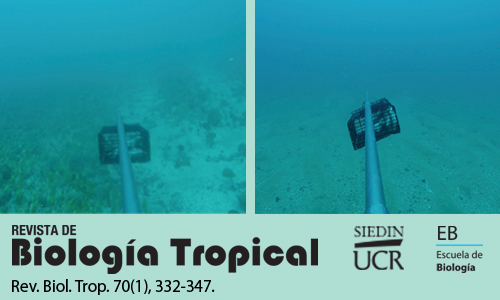Abstract
Introduction: Video techniques are used worldwide to study marine communities. As elsewhere, the use of remote underwater videos has recently increased in Brazil and there is a need for information about their advantages, disadvantages, and reliability in tropical habitats. Objective: To evaluate the use of baited remote underwater video stations (BRUVS) in fish diversity research in a tropical habitat. Methods: We used baited video stations to record the fishes and their relationship with habitat type, underwater visibility and depth, in 79 random sites in the Metropolitan Region of Recife, Northeastern Brazil (11 days in November 2017). Results: We recorded 3 286 individuals (65 taxa, 29 families) along a 25 km section of the shoreline, 10.2 to 28.6 m depth. The Clupeidae dominated numerically, followed by Haemulidae, Carangidae, and Lutjanidae; by species, Haemulon aurolineatum, Ophistonema oglinum, Haemulon steindachneri, Lutjanus synagris and Caranx crysos. The highest mean number of species was detected over sediment close to shipwrecks, but we found no differences among the mean number of individuals between habitat types. More species and individuals were observed at a depth of 20-25 m depth. The highest mean number of species was in 2-3 m of visibility, and the highest number of individuals within 4-5 m. Conclusions: Video recording seemed to be a valid method, and indicated that —besides being relatively diverse— the local fish community is dominated by a few species of small and medium-sized mesopredators, and a few top predators.
##plugins.facebook.comentarios##

This work is licensed under a Creative Commons Attribution 4.0 International License.
Copyright (c) 2022 Revista de Biología Tropical







